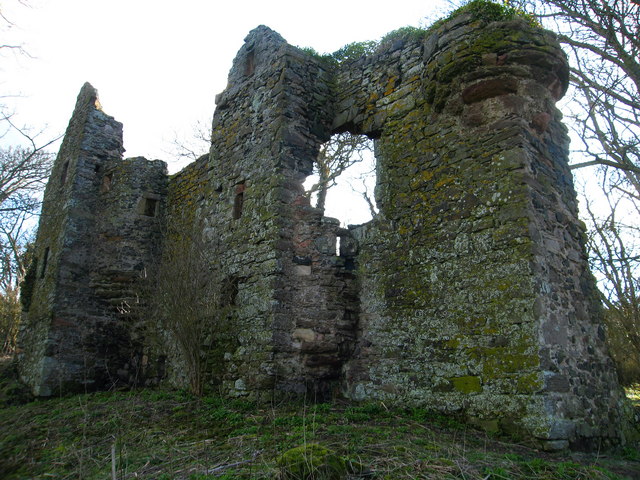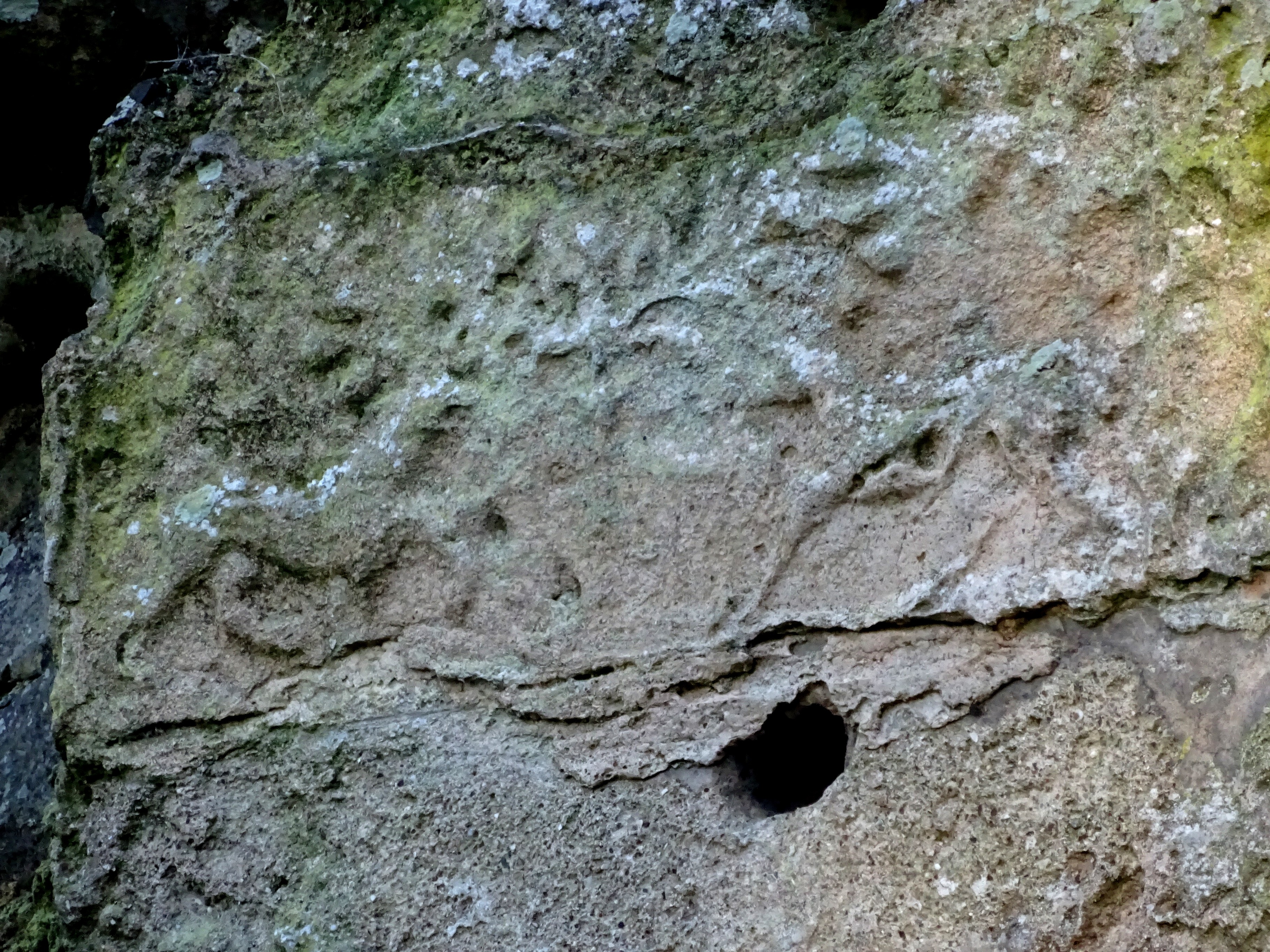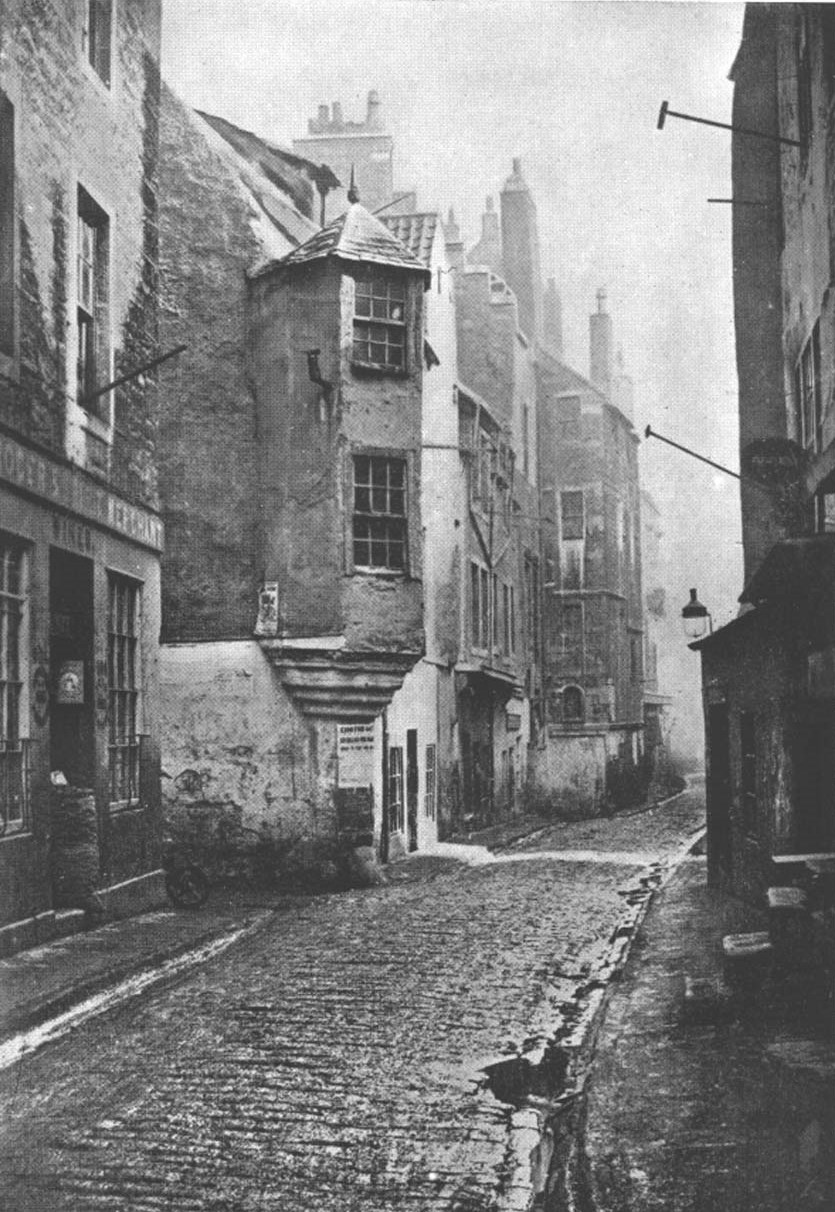|
Adam Otterburn
Adam Otterburn of Auldhame and Redhall (died 6 July 1548) was a Scottish lawyer and diplomat. He was king's advocate to James V of Scotland and secretary to Mary of Guise and Regent Arran. The King's lawyer The law brought against the Douglas family Adam Otterburn was an important servant of the Scottish monarchy as a lawyer and a diplomat. In August 1524 Margaret Tudor sent him to England with the Earl of Cassilis and Scot of Balwearie to negotiate peace, and a possible marriage for James V with Princess Mary. In May 1525 the English ambassador Dr Thomas Magnus recommended him to Cardinal Wolsey for an annual pension of £20. In 1528 Magnus and Otterburn again discussed the possibilities of a marriage between James V and Princess Mary. When James V assumed the throne as an adult ruler and rejected the Douglases and their associates, Otterburn drew up charges of treason against them on 13 July 1529. On 8 November 1529 he was one of the Scottish commissioners who met English d ... [...More Info...] [...Related Items...] OR: [Wikipedia] [Google] [Baidu] |
Auldhame Castle
Auldhame Castle is a ruined L-plan tower house standing on a ridge above Seacliff beach, about 3 miles east of North Berwick in East Lothian, and less than half a mile from Tantallon Castle. Description The castle was built in the 16th century, probably by Adam Otterburn of Reidhall, Lord Provost of Edinburgh. It consists of a three-storey main block with a projecting stair-tower. Part of a vaulted basement kitchen remains, with a bread oven. The upper floors are mostly gone. Some plaster remains on the walls, including traces of a moulded decorative frieze. Archaeological excavation One of the three supposed corpses of Saint Baldred of Tyninghame was said to have been buried at the site in 756. A cemetery site in an adjoining field was excavated in 2008, the remains of at least 326 individual skeletons were noted, plus the foundations of a probable chapel with an estimated 9th century date (based on comparisons with similar structures). See also *List of castles in Scotland ... [...More Info...] [...Related Items...] OR: [Wikipedia] [Google] [Baidu] |
Gold Mining In Scotland
Gold has been mined in Scotland for centuries. There was a short-lived gold rush in 1852 at Auchtermuchty and Kinnesswood, and another in 1869 at Kildonan in Sutherland. There have been several attempts to run commercial mines. In the Lowther Hills, Leadhills, and Wanlockhead areas gold prospecting and the extraction of lead metal went hand in hand. From 1424, under the Royal Mines Act, until 1592, gold and silver mined in Scotland were deemed to belong to the crown. Medieval records In 1125 David I of Scotland gave his tenth share of gold mining profits in Fife and Fothrik to Dunfermline Abbey. Fothrik was an area west of Fife, extending towards the Ochils and Alloa. In 1424, James I declared by act of Parliament that gold or silver, and lead ore rich in silver belonged to the crown, as was customary in other kingdoms. 16th-century mining Mines were opened in 1502 during the reign of James IV of Scotland. The French governor or Regent of Scotland, John Stewart, Duke of Albany ha ... [...More Info...] [...Related Items...] OR: [Wikipedia] [Google] [Baidu] |
James Hamilton, Duke Of Châtellerault
James Hamilton, 1st Duke of Châtellerault, 2nd Earl of Arran ( 1519 – 22 January 1575), was a Scottish nobleman and head of the House of Hamilton. A great-grandson of King James II of Scotland, he was heir presumptive to the Scottish throne (1536–1540, 1541–1542, 1542–1566 and 1567–1575). Arran was Regent of Scotland during the minority of Mary, Queen of Scots from 1543 to 1554, when he lost the regency to Mary of Guise. At first pro-English and Protestant, he converted to Catholicism in 1543 and supported a pro- French policy. He reluctantly agreed to Mary's marriage to Francis, eldest son of King Henry II of France, and was rewarded by Henry by being made Duke of Châtellerault in 1549. During the Scottish Reformation, Châtellerault joined the Protestant Lords of the Congregation to oppose the regency of Mary of Guise, and lost his French dukedom as a result. Family James Hamilton was born about 1519 in Hamilton in Lanarkshire. He was the eldest legitimate son ... [...More Info...] [...Related Items...] OR: [Wikipedia] [Google] [Baidu] |
Ralph Sadler
Sir Ralph Sadler or Sadleir Privy Council of England, PC, Knight banneret (1507 – 30 March 1587) was an English statesman, who served Henry VIII of England, Henry VIII as Privy Council of England, Privy Councillor, Secretary of State (England), Secretary of State and ambassador to Scotland. Sadler went on to serve Edward VI of England, Edward VI. Having signed the device settling the crown on Lady Jane Grey, Jane Grey in 1553, he was obliged to retire to his estates during the reign of Mary I of England, Mary I. Sadler was restored to royal favour during the reign of Elizabeth I of England, Elizabeth I, serving as a Privy Councillor and once again participating in Anglo-Scottish diplomacy. He was appointed Chancellor of the Duchy of Lancaster in May 1568. Family and early life Ralph Sadler was born in Hackney (parish), Hackney, Middlesex, the elder son of Henry Sadler, a minor official in the service of the Thomas Grey, 2nd Marquess of Dorset, Marquess of Dorset and Edward Be ... [...More Info...] [...Related Items...] OR: [Wikipedia] [Google] [Baidu] |
Jack Of Plate
A jack of plate is a type of armour made up of small iron plates sewn between layers of felt and canvas. They were commonly referred to simply as a "jack" (although this could also refer to any outer garment). This type of armour was used by common Medieval European soldiers as well as by the rebel peasants known as Jacquerie. The present day equivalent is perhaps a bullet-proof vest. The jack is similar to the brigandine. The main difference is in the method of construction: a brigandine is riveted whereas a jack is sewn. Jacks of plate were created by stitching as many as 1000 small overlapping squares of iron between two canvases. The garments weighed about , which made them much more acceptable to the wearer than solid breastplates. They also offered a tactical advantage: they allowed soldiers to rest the butts of weapons firmly against their shoulders, which wasn't feasible with smooth-surfaced plate armours. Unlike plate they made no attempt to be bulletproof. Jacks w ... [...More Info...] [...Related Items...] OR: [Wikipedia] [Google] [Baidu] |
David Beaton
David Beaton (also Beton or Bethune; 29 May 1546) was Archbishop of St Andrews and the last Scotland, Scottish Cardinal (Catholicism), cardinal prior to the Scottish Reformation, Reformation. Career Cardinal Beaton was the sixth and youngest son of eleven children of John Beaton (Bethune) of Balfour in the county of Fife, and his wife Mary, daughter of Sir David Boswell of Balmuto. The Bethunes of Balfour were part of Clan Bethune, the Scottish branch of the noble French House of Bethune. The Cardinal is said to have been born in 1494. He was educated at the universities of University of St Andrews, St Andrews and University of Glasgow, Glasgow, and in his sixteenth year was sent to Paris, where he studied civil and canon law (Catholic Church), canon law. In 1519 King James V of Scotland named him ambassador in France. In 1520, his uncle, James Beaton, Archbishop of Glasgow, named David Beaton Rector (ecclesiastical), Rector and Prebendary at Cambuslang#David Beaton, Cambusla ... [...More Info...] [...Related Items...] OR: [Wikipedia] [Google] [Baidu] |
James Colville (judge)
Sir James Colville of Easter Wemyss (died 1540) was a Scottish administrator, lord of session and diplomat. Life He was the elder son of Robert Colville of Ochiltree and Margaret Logan. He was one of the commissioners to parliament on 15 February 1525. He was appointed to the office of comptroller by 1525, when he made an account of household expenses for James V of Scotland. In 1529 he exchanged the lands of Ochiltree with James Hamilton of Finnart for the lands of Easter Wemyss and Lochorshyre in Fifeshire. The same year he was appointed a director of the chancery. He was one of the commissioners to parliament on 24 April and 13 May 1531, 15 December 1535, and 29 April 1536. He was nominated a lord of the articles on 13 May 1532 and 7 June 1535, and at the latter date was chosen a commissioner for the taxation of £6,000 voted by the three estates to James V of Scotland on his approaching marriage. On the institution of the College of Justice in 1532, Colville was appointed o ... [...More Info...] [...Related Items...] OR: [Wikipedia] [Google] [Baidu] |
Comptroller Of Scotland
The Comptroller of Scotland was a post in the pre-Union government of Scotland. The Treasurer of Scotland, Treasurer and Comptroller had originated in 1425 when the Chamberlain of Scotland, Chamberlain's financial functions were transferred to them. From 1466 the Comptroller had sole responsibility for financing the royal household to which certain revenues (the property) were appropriated, with the Treasurer being responsible for the remaining revenue (the casualty) and other expenditure. By the 1530s the exchequer usually met in Edinburgh to audit and produce the accounts. Rooms were hired in the Blackfriars for the sessions. County sheriffs and other officials brought their reckonings to the exchequer. The accounts of the comptrollers were mostly in written in Latin, and were published as the ''Exchequer Rolls of Scotland''. James VI and I, James VI attended the Exchequer in person in Edinburgh on 13 February 1595, which pleased courtiers who wished to see him manage his estate ... [...More Info...] [...Related Items...] OR: [Wikipedia] [Google] [Baidu] |
Dumbarton Castle
Dumbarton Castle ( gd, Dùn Breatainn, ; ) has the longest recorded history of any stronghold in Scotland. It sits on a volcanic plug of basalt known as Dumbarton Rock which is high and overlooks the Scottish town of Dumbarton. History Dumbarton Rock was formed between 330 and 340 million years ago, during the Early Carboniferous period, a time of widespread volcanic activity in the area where Glasgow is now situated; over time, the softer exterior of the volcano weathered away, leaving behind a volcanic plug of basalt. Iron Age At least as far back as the Iron Age, this has been the site of a strategically important settlement, as evidenced by archaeological finds. The people that came to reside there in the era of Roman Britain were known to have traded with the Romans. However the first written record about a settlement there was in a letter that Saint Patrick wrote to King Ceretic of Alt Clut in the late 5th century. Early Medieval era David Nash Ford has proposed tha ... [...More Info...] [...Related Items...] OR: [Wikipedia] [Google] [Baidu] |
David Lyndsay
Sir David Lyndsay of the Mount (c. 1490 – c. 1555; ''alias'' Lindsay) was a Scottish herald who gained the highest heraldic office of Lyon King of Arms. He remains a well regarded poet whose works reflect the spirit of the Renaissance, specifically as a makar. Biography He was the son of David Lyndsay, second of the Mount (Fife), and of Garmylton, (Haddingtonshire) (d.''circa.'' 1503). His place of birth and early education are unknown, but he may have attended the University of St Andrews, on the books of which appears an entry "Da Lindesay" for the session 1508–1509. He was engaged as a courtier in the Royal Household; first as an equerry, then as an usher (assistant to a head-tutor) to the future King James V of Scotland. His poems mention that he was involved in the education of James V and some contain advice for the young king. In 1522 he married Janet Douglas, a court seamstress. His first heraldic appointment was as Snowdon Herald and in 1529 he was appoint ... [...More Info...] [...Related Items...] OR: [Wikipedia] [Google] [Baidu] |
Friars
A friar is a member of one of the mendicant orders founded in the twelfth or thirteenth century; the term distinguishes the mendicants' itinerant apostolic character, exercised broadly under the jurisdiction of a superior general, from the older monastic orders' allegiance to a single monastery formalized by their vow of stability. A friar may be in holy orders or a brother. The most significant orders of friars are the Dominicans, Franciscans, Augustinians, and Carmelites. Definition Friars are different from monks in that they are called to live the evangelical counsels (vows of poverty, chastity, and obedience) in service to society, rather than through cloistered asceticism and devotion. Whereas monks live in a self-sufficient community, friars work among laypeople and are supported by donations or other charitable support. Monks or nuns make their vows and commit to a particular community in a particular place. Friars commit to a community spread across a wider geograp ... [...More Info...] [...Related Items...] OR: [Wikipedia] [Google] [Baidu] |
Berwick Pursuivant
Berwick Pursuivant of Arms in Ordinary was an English office of arms created around 1460 for service on the Scottish Marches based at Berwick-upon-Tweed. In the 16th century there was also a Herald or Pursuivant based at Carlisle on the west border. The offices lapsed after the Union of the Crowns in 1603 made their main purpose of communicating between the English and Scottish monarchs redundant. Charles Wriothesley Charles Wriothesley, author of ''A Chronicle of England, 1485–1559'', was appointed Berwick Pursuivant at the age of 16 in 1524. Leonard Warcup The Scottish courtier Adam Otterburn arranged for Leonard Warcup, Berwick Pursuivant, to meet James V of Scotland on 26 June 1529. Warcup had previously been Carlisle Pursuivant, an equivalent office in the West border. In August 1534, Warcup was described as newly made Carlisle Herald. An old authority states that Warcup was made Berwick Pursuivant by Henry VII. On 29 December 1542 the Carlisle Pursuivant was appointed ... [...More Info...] [...Related Items...] OR: [Wikipedia] [Google] [Baidu] |








